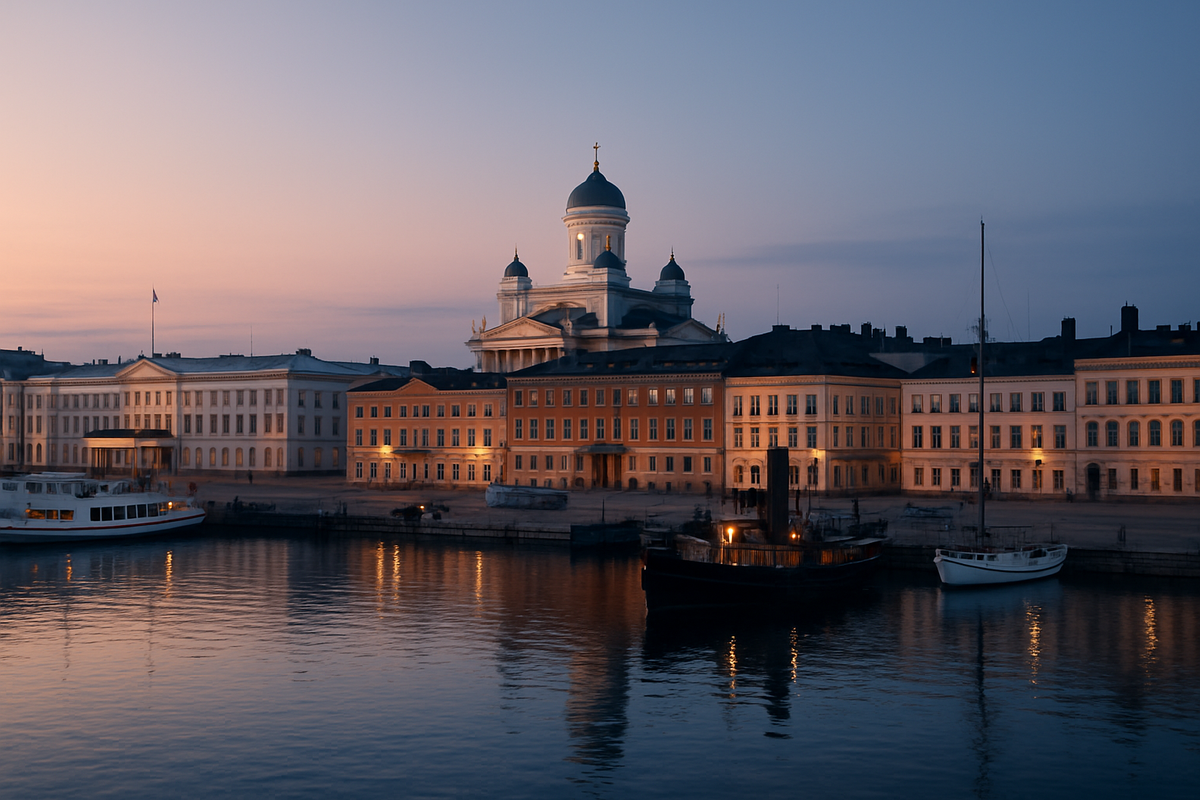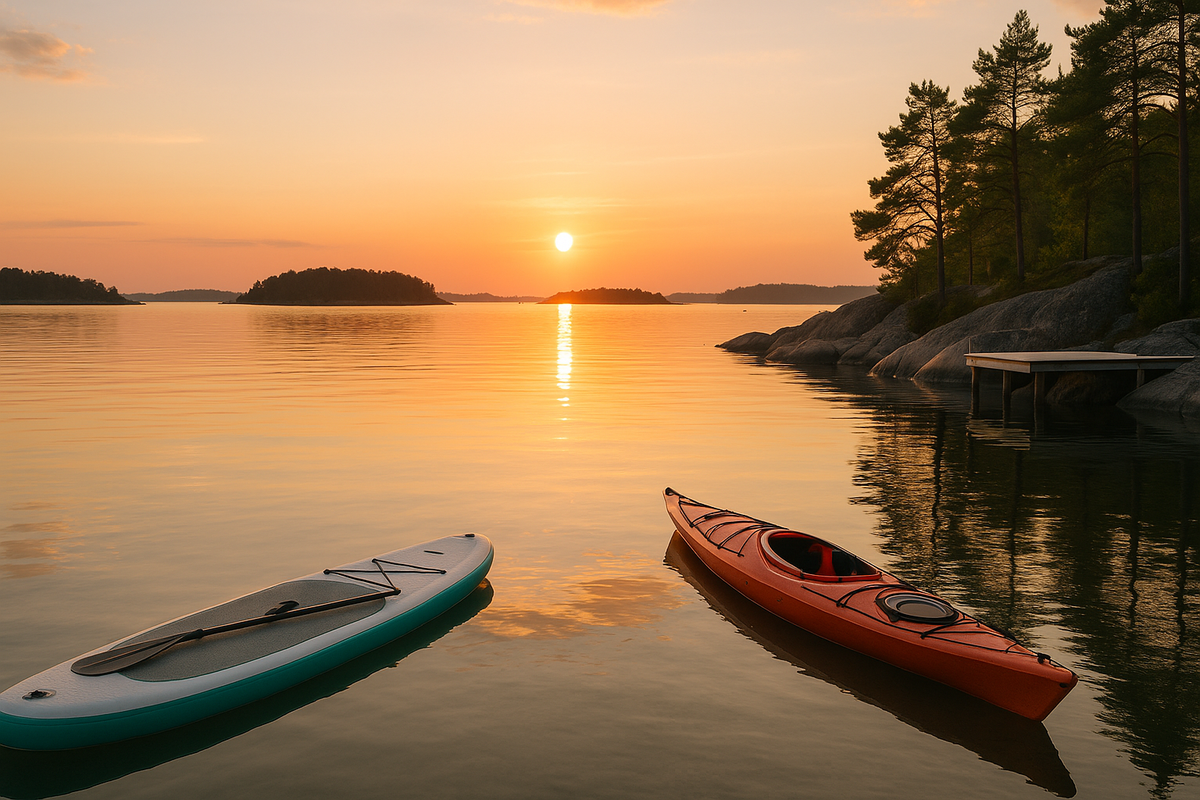☀️ Summer in Finland: long evenings, warm bays and light breezes 🌊
In this article, you'll discover the secrets to capturing the brightest time of the year in Finland: where nights transform into endless summer evenings, the water in the lakes is as warm as a heated pool, and the sea breeze on the Baltic Sea is as refreshing as a summer's day. You'll also find out what to pack to make the most of the weather. A dash of facts, a sprinkle of intuition — and you've got your summer plan all set! There's plenty of room for wind and those refreshing short showers.
White nights are such a lovely thing, where night becomes a continuation of day.
I'm sure you'll love the bright nights in June if you come to the south of Finland. The cities of Helsinki, Turku and Tampere are so brightly lit that you can walk without a torch! North of the Arctic Circle (Saariselkä, Inari), the sun doesn't set from the end of May to the end of July — it's a wonderful time to go trekking and you don't need to rush to get back before sunset. By mid-August, night gradually 'returns' (if you'll pardon the expression!), and this is a great time for warm lake evenings and photographing the stars.

I totally get how temperatures can feel, and I'm here to help you with that!
During the day, summers are lovely and mild. In the south, it's usually a warm +18...+24 °C, and in Lapland, it's a comfortable +14...+20 °C. It's lovely and cool at night, especially near the lakes and in the tundra areas. The sea breeze is so refreshing! It can make it feel 2–4 °C cooler, so even in July, a light windbreaker jacket makes a walk by the water much more pleasant.

The rain came and went. How could you make the most of the good weather?
Summer showers are often short and localised: it might be grey one minute and clear the next. The weather is more stable inland, and marine fronts reach the west coast and archipelagos faster. A good plan is to do the things you want to do in the morning and afternoon, and save the museums and other attractions for the evening.
Water, swimming and upwelling
In July, the water temperature of the Baltic Sea off the coast of Helsinki is usually between +15...+19 °C, and in the sheltered bays of the Turku/Åland archipelago, it is between +17...+21 °C. By the end of July or August, the water temperature of lakes Saimaa and Päijänne is often between +18 and +22 °C in the shallow bays. If the water suddenly 'drops' after the winds, this is upwelling. To make summer warm again, simply switch from open water to a closed bay or go to a lake.
We have routes for every type of weather.
The best time to visit is in the morning. You can go SUP boarding on Saimaa, have a picnic at the pier and catch the evening tram to Suomenlinna Island. There is a light breeze from the sea, which makes it comfortable to walk in the forest trails of Nuuksio. You can have lunch in old Porvoo and watch the sunset in a sheltered bay in the archipelago. A quick rain shower — visit the museum and then have a coffee. By 5 p.m. the embankments are dry and warm again.
Look at these small displays — to feel the summer!
The Turku Archipelago is a quiet strait that smells of resin and warm wood. The water is calm, and the SUP board glides easily.
Saimaa Lake District: morning after a hot day — fog comes in near the shore, but the bay is already 21 °C, and the grass on the pier is still wet.
Lapland, Inari: it is midnight. The sun touches the edge of the pine trees. There are almost no shadows, and it seems like the evening has just begun.

What should you take to make the weather work for you?
The working formula has three layers: base layer, fleece/sweater and light membrane. When you're at sea, you'll need wind protection and shoes that grip well. On lakes, you'll want sunglasses and sun cream. For children, don't forget life jackets and repellent. A sleep mask and thick curtains will be useful during the white nights, especially if you are going to get up early.
Please write your thoughts in the comments. If you have interesting photos, personal experiences or questions about the topic of the article, please leave a comment. We will definitely reply, because we are making the most useful and popular blog about Finland!
FAQ — frequently asked questions
Lakes are usually warmer than the Baltic Sea at the end of July and in the first half of August; look for sheltered bays in archipelagos — they warm up quickly.
There are short bursts of +27...+30 °C in the south in July. In accommodation without air conditioning, thick curtains, ventilation and evenings by the water can help.
On windy days, on the coast and at the end of August. In the forest at the end of June–July, activity is higher — light, closed clothing and repellent help.
If the water has cooled sharply by 2–5 °C in a day with a steady wind, then yes. The solution is simple: go to bays or lakes.
They can. A sleep mask, thick curtains and a slight adjustment to your routine will completely solve the problem.
Wind (m/s), waves and storm fronts. If the weather worsens, choose sheltered straits and postpone your start until the morning or the next day.
Late July to early August, especially on Saimaa and Päijänne in shallow bays.
A lightweight windproof and waterproof jacket: at the seaside, it adds 2–4 °C of ‘comfort’ to any walk.





0 comments
Log in to leave a comment